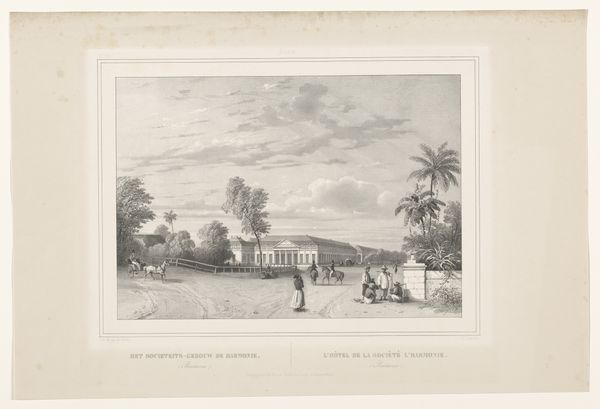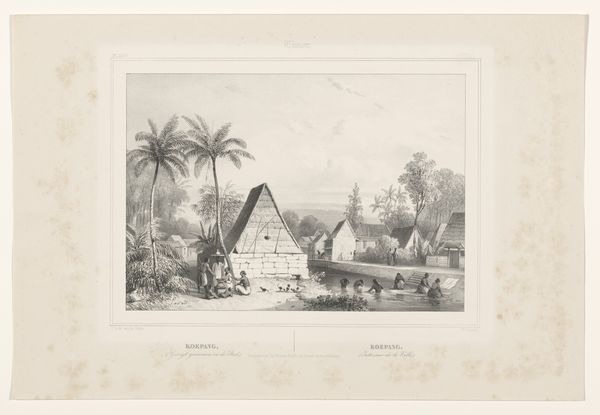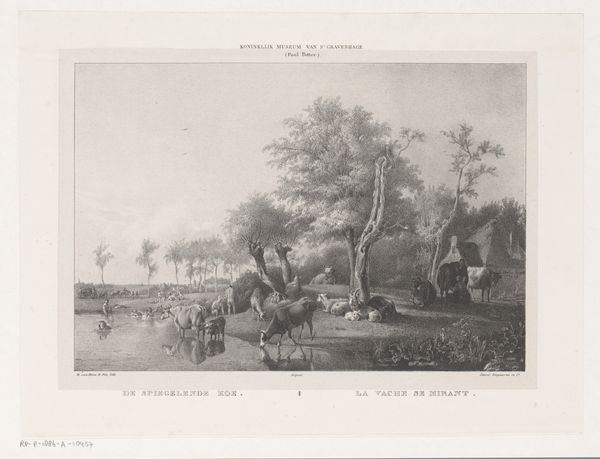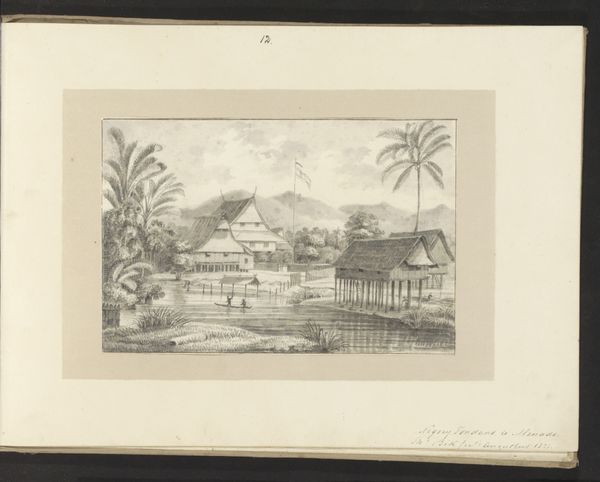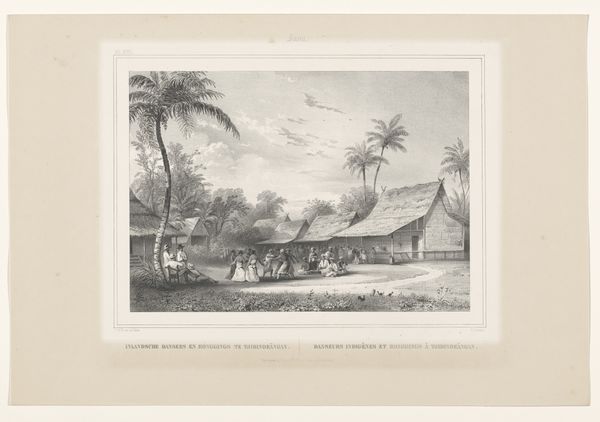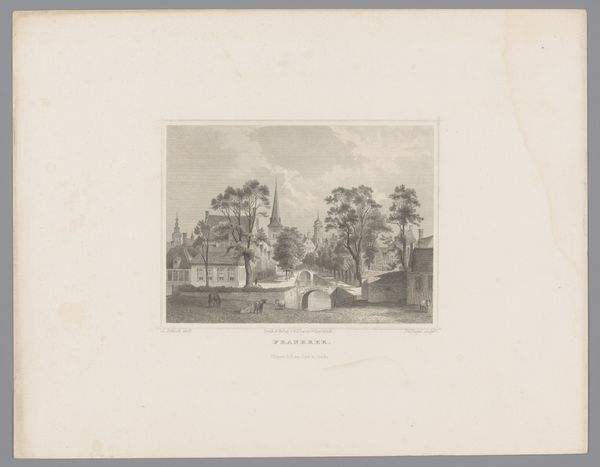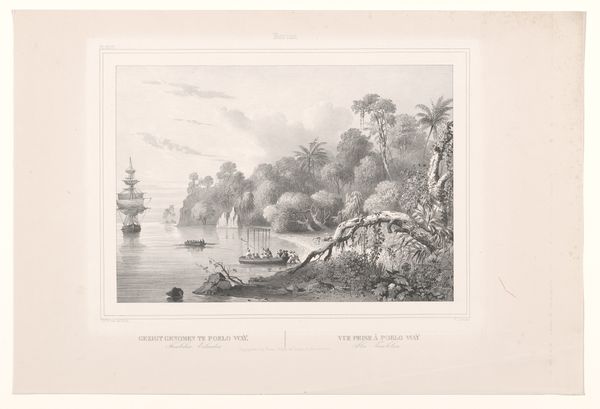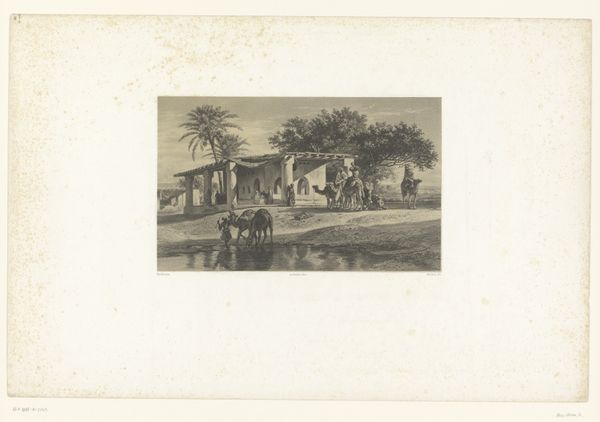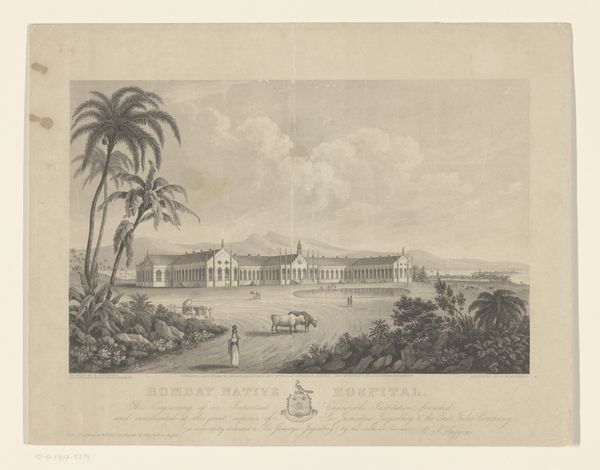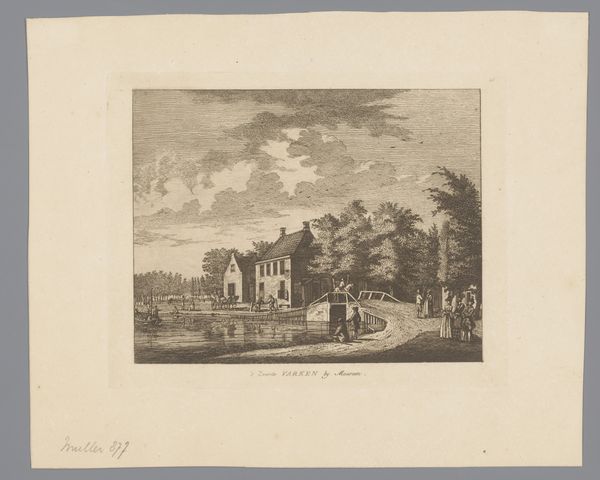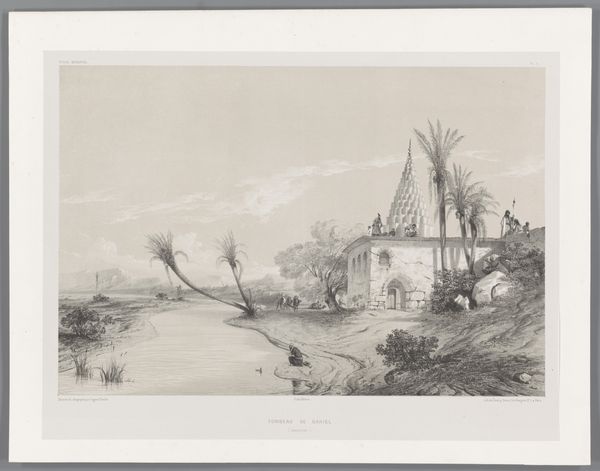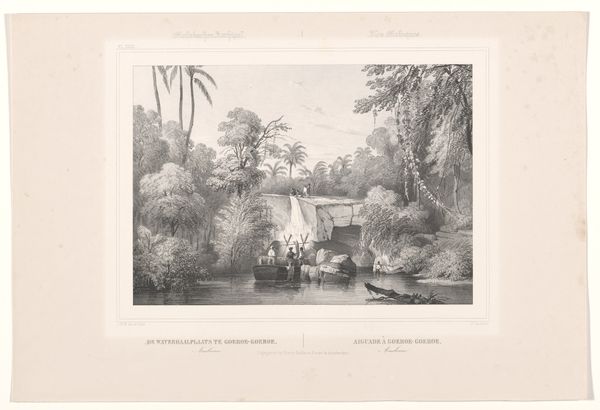
drawing, lithograph, print
#
drawing
#
lithograph
# print
#
asian-art
#
landscape
#
romanticism
#
orientalism
Dimensions: height 345 mm, width 510 mm
Copyright: Rijks Museum: Open Domain
Curator: Right, let's turn our attention to this striking lithograph, "Ruïne van het paleis van de sultan van Bantam" by Paulus Lauters, dating from between 1843 and 1845. It’s currently held here at the Rijksmuseum. Editor: The scene almost has the quality of a dream – all muted tones and a somber sort of tranquility. Curator: The composition really directs your eye, doesn't it? The crumbling structures of the palace are framed by the lush, almost overwhelmingly present, tropical flora. There's a real push and pull between nature and what once was, speaking of time and entropy. Editor: What fascinates me is the technique. The way the light interacts with the surface makes you realize how complex and meticulous printmaking is, or can be, challenging traditional definitions around artistic 'skill' or labor, you know? And what kind of lithographic stone did Lauters use? Where did he get it from? The print doesn't exist separate from all of those material circumstances. Curator: Definitely. Lauters was working within the Romantic tradition, particularly its fascination with the sublime and the exotic, which, of course, raises questions about Orientalism. The image certainly evokes a feeling of nostalgia for a lost past, filtered, naturally, through a Western lens. It becomes, you realize, not just a picture of a ruined palace but an image of loss and cultural encounter. Editor: Right, and the fact that it is a lithograph, reproduced and disseminated widely, changes our access to and understanding of the sultanate’s material culture... it creates a very specific story, where production is integral to our reception. Also, consider what inks would have been used in this historical printmaking, and what local economies they may be a result of. Curator: It reminds you that behind every picture there's a story, an intention. It makes me reflect on all the choices and processes, conscious and unconscious, that influence a final product. Editor: Indeed! It emphasizes how art is very much tied up with where it comes from – quite literally from the earth as material but equally in terms of human experience and politics.
Comments
No comments
Be the first to comment and join the conversation on the ultimate creative platform.
